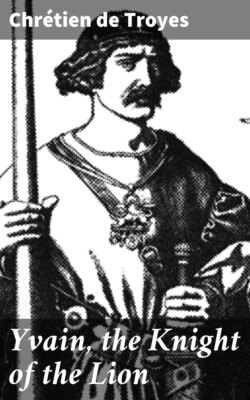Читать книгу Yvain, the Knight of the Lion - Chretien de Troyes - Страница 4
Footnotes
ОглавлениеNOTE: Endnotes supplied by Prof. Foerster are indicated by "(F.)"; all other endnotes are supplied by W.W. Comfort.
1 ↑ "cele feste, qui tant coste, Qu'an doit clamer la pantecoste." This rhyme is frequently met in mediaeval narrative poems.(F.)
2 ↑ The contemporary degeneracy of lovers and of the art of love is a favourite theme of mediaeval poets.
3 ↑ Cf. "Roman de la Rose", 9661, for the stinking manure pit. (F.)
4 ↑ The forest of Broceliande is in Brittany, and in it Chretien places the marvellous spring of Barenton, of which we read in the sequel. In his version the poet forgets that the sea separates the court at Carduel from the forest of Broceliande. His readers, however, probably passed over this "lapsus". The most famous passage relating to this forest and its spring is found in Wace, "Le Roman de Rou et des dues de Normandie", vv. 6395-6420, 2 vols. (Heilbronn, 1877-79). Cf. further the informing note by W.L. Holland, "Chretien von Troies", p. 152 f. (Tubingen, 1854).
5 ↑ This grotesque portrait of the "vilain" is perfectly conventional in aristocratic poetry, and is also applied to some Saracens in the epic poems. Cf. W.W. Comfort in "Pub. of the Modern Language Association of America", xxi. 494 f., and in "The Dublin Review", July 1911.
6 ↑ For the description of the magic fountain, cf. W.A. Nitze, "The Fountain Defended" in "Modern Philology", vii. 145-164; G.L. Hamilton, "Storm-making Springs", etc., in "Romantic Review", ii. 355-375; A.F. Grimme in "Germania", xxxiii. 38; O.M. Johnston in "Transactions and Proceedings of the American Philological Association", xxxiii., p. lxxxiii. f.
7 ↑ Eugen Kolbing, "Christian von Troyes Yvain und die Brandanuslegende" in "Ztsch. fur vergleichende Literaturgeschichte" (Neue Folge, xi. Brand, 1897), pp. 442-448, has pointed out other striking allusions in the Latin "Navigatio S. Brandans" (ed. Wahlund, Upsala, 1900) and elsewhere in Celtic legend to trees teeming with singing birds, in which the souls of the blessed are incorporated. A more general reference to trees, animated by the souls of the dead, is found in J.G. Frazer, "The Golden Bough" (2nd ed. 1900), vol. I., p. 178 f.
8 ↑ Cf. A. Tobler in "Ztsch. fur romanische Philologie", iv. 80-85, who gives many other instances of boasting after meals. See next note.
9 ↑ Noradin is the Sultan Nureddin Mahmud (reigned 1146-1173), a contemporary of the poet; Forre is a legendary Saracen king of Naples, mentioned in the epic poems (cf. E. Langlois, "Table des noms propres de toute nature compris dans les chansons de geste", Paris, 1904; Albert Counson, "Noms epiques entres dans le vocabulaire commun" in "Romanische Forschungen", xxiii. 401-413). These names are mentioned here in connection with the brave exploits which Christian knights, while in their cups, may boast that they will accomplish (F.). This practice of boasting was called indulging in "gabs" (=Eng. "gab"), a good instance of which will be found in "Le Voyage de Charlemagne a Jeruslaem" (ed. Koschwitz), v. 447 ff.
